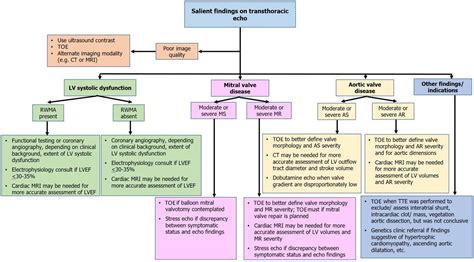echocardiogram results interpretation|Understanding the echocardiogram : Bacolod Although few generalists actually perform echocardiograms, most order or have to interpret them at some stage. Our aim then is not to explain how to carry out echocardiography, but how to realize its potential and .
Looking for a private overnight hike to Trolltunga? Join our Private Husky Camp hike for a secluded and unique experience. Hike along side huskies, enjoy the stunning scenery and spend time in your private campsite with breathtaking views, this whilst we take care of the rest. . ©Trolltunga Adventures AS 2013-2024. Org nr 917 218 269 .

echocardiogram results interpretation,Learn how to decode echocardiogram reports and assess the structure and function of the heart. This guide covers the basics of echocardiography, the components of an echocardiogram report, and the interpretation of normal and abnormal results. Learn what an echocardiogram is, how it works, and what it can reveal about your heart health. Find out how to interpret the image and measurements of your echo test and what they mean for . Learn how an echocardiogram uses ultrasound to show your heart's structure and function. Find out the types of echocardiograms, how to prepare, and .Learn about the terms and measurements used in an echo report, such as LVSD and EF, and what they mean for your heart health. Kelly Victor, a Clinical Scientist in .
Results. Information from an echocardiogram may show: Changes in heart size. Weakened or damaged heart valves, high blood pressure or other diseases can .Although few generalists actually perform echocardiograms, most order or have to interpret them at some stage. Our aim then is not to explain how to carry out echocardiography, but how to realize its potential and . Learn about the different types of echocardiogram (echo) tests, how they use ultrasound to check your heart structure and function, and what they show. . An echocardiogram is a medical test that uses sound waves (ultrasound) to produce images of your heart. It allows healthcare providers to see the heart's structures .
An echocardiogram is an ultrasound to evaluate the heart's structures and direction of blood flow. Read about the echocardiogram test, results, and the different types of . If you've had an echocardiogram, this video will help you understand the results in your report. Narrated by Dr. Christopher Kelly, MD, MS, FACC (North Carol. Bowery Image Group Inc. / Stocksy. An echocardiogram is a medical test that uses sound waves (ultrasound) to produce images of your heart. It allows healthcare providers to see the heart's .
echocardiogram results interpretationEchocardiogram. An echocardiogram is a noninvasive (the skin is not pierced) procedure used to assess the heart's function and structures. During the procedure, a transducer (like a microphone) sends out sound waves at a frequency too high to be heard. When the transducer is placed on the chest at certain locations and angles, the sound waves .Understanding the echocardiogram Echocardiogram. An echocardiogram is a noninvasive (the skin is not pierced) procedure used to assess the heart's function and structures. During the procedure, a transducer (like a microphone) sends out sound waves at a frequency too high to be heard. When the transducer is placed on the chest at certain locations and angles, the sound waves . An echocardiogram—echo for short—is an ultrasound of your heart. Echocardiograms show the size and structure of the heart and what’s happening in the different chambers as your heart is beating. Keep in mind that an echo is one method a cardiologist uses to make a diagnosis. Your cardiologist will interpret the results in the .

Echocardiography is the use of ultrasound to evaluate the structural components of the heart in a minimally invasive strategy. Although, prior to the invention of today's routinely used 2-dimensional echocardiography, there was motion-based (M-mode) echocardiography. In 1953, Inge Edler, regarded as the father of .
echocardiogram results interpretation Understanding the echocardiogram Echocardiography is the use of ultrasound to evaluate the structural components of the heart in a minimally invasive strategy. Although, prior to the invention of today's routinely used 2-dimensional echocardiography, there was motion-based (M-mode) echocardiography. In 1953, Inge Edler, regarded as the father of . GPs often receive echocardiogram reports and are asked to interpret them. Here is a grossly simplified version of how. I have concentrated on explaining the “jargons” on the echocardiogram report in plain physiology, hence the length of the article! Roughly speaking, echocardiogram uses ultrasound waves to Transthoracic echocardiography (TTE), sometimes called “surface echocardiography,” is a basic tool for investigation and follow-up of heart disease. Consultants who interpret TTE endeavour to provide accurate, useful reports to colleagues who order these tests. Referring physicians sometimes find reported results difficult to . An echocardiogram is a specialized ultrasound scan of the heart. It gives detailed information about how efficiently the heart pumps blood and oxygen to the organs and how well the heart valves work. A trained and qualified cardiologist (heart specialist) needs to read an echocardiogram to know if the results are normal or not.
echocardiogram results interpretation|Understanding the echocardiogram
PH0 · Understanding the echocardiogram
PH1 · Interpreting Echocardiogram Results: A Comprehensive Guide For
PH2 · Interpreting Echocardiogram Results: A Comprehensive Guide
PH3 · How to read an echocardiogram report
PH4 · How to Interpret Echocardiograms: 8 Steps (with
PH5 · Echocardiogram: What It Shows, Purpose, Types, and Results
PH6 · Echocardiogram: What It Shows, Purpose, Types, and Results
PH7 · Echocardiogram: Types and What They Show
PH8 · Echocardiogram: Purpose, Types, and Results
PH9 · Echocardiogram Meaning, Procedure, Test Results
PH10 · Echocardiogram
PH11 · A Guide to Understanding Echocardiogram Results